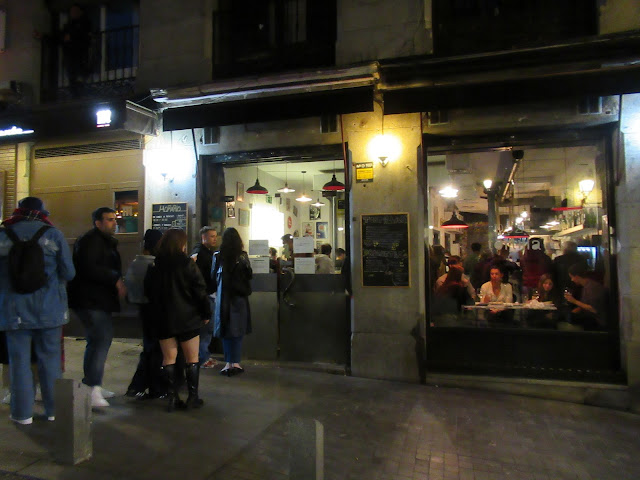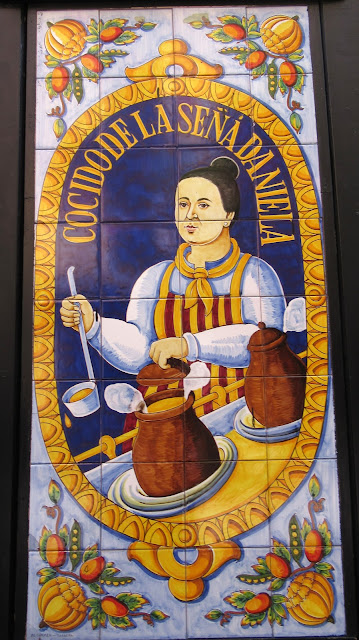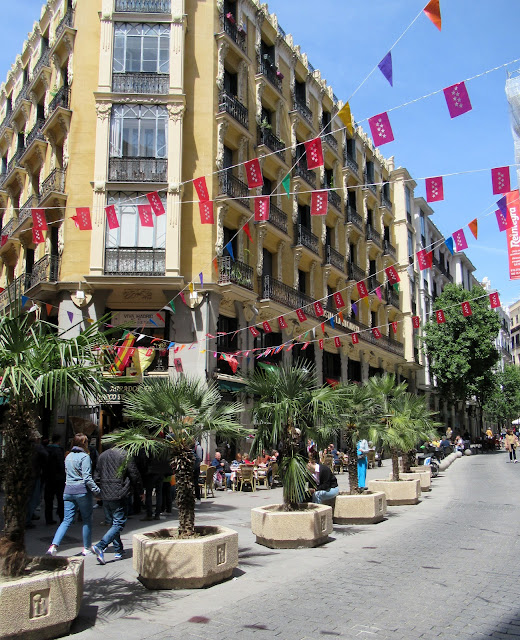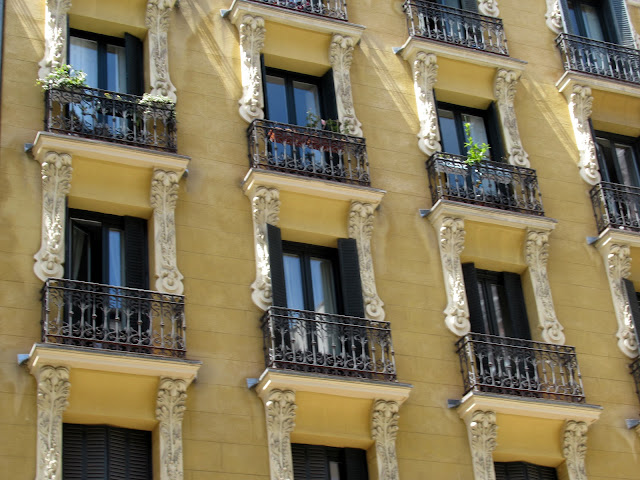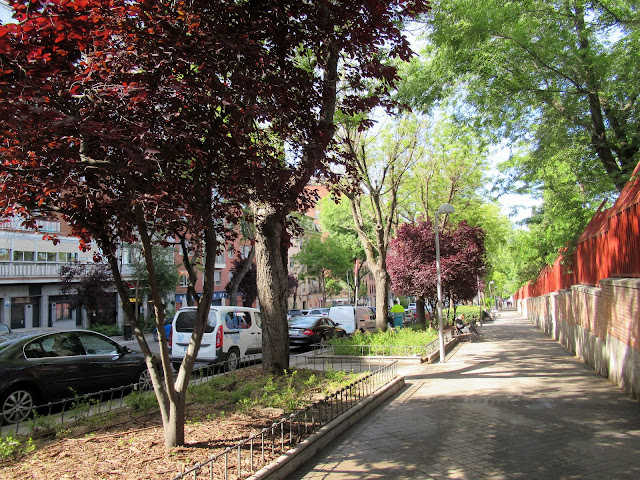We spent ten days in Madrid in May. It was my first visit to the city and I was enchanted. It's a beautiful, vibrant city that never seems to go to bed. Hemingway once wrote that no one in Madrid goes to bed before first killing the night, and it remains as true today as it was when he wrote it. We loved walking around the city, awed by the architecture, visiting the museums and galleries which house some of the most magnificent art that has been produced, or just sitting in tapas bars watching the life of the city unfolding in front of us. It was quite an experience.
Our hotel was in the La Latina district. According to the guide book: 'La Latina is Madrid's most intimate inner-city neighbourhood, a winning combination of some of Madrid's best tapas and tightly packed medieval streets'.
We stayed in this hotel, Posada del Leon de Oro and were very pleased with our choice. It's situated in Calle de la Cava Baja
A few days before we left, the facade of our hotel changed as did most buildings. Red carnations and shawls/flags decorated the balconies and the city was preparing for the celebrations leading up to the birthday of its patron saint, Saint Isidro.
and this was the view from our hotel balcony.
Our guide book described our street as 'one of the world's great culinary streets' and this is exactly what it is. People come here from all over Madrid for the wine and tapas - we could hear the noise from the bars from our room: it would start at around 10:00 am and would continue until 2:30 at night when it would suddenly stop - there is obviously some sort of curfew.
80% of the commercial premises on our street were tapas bars or tabernas.
Even this place was some kind of cafe for children
Iberian ham is, of course, the national dish here
Some places had permanent queues outside of people waiting to go in
I love these tiled depictions outside shops and even houses
some are painted
A two-minute walk away from our hotel is a group of streets which lead to Plaza Mayor and which are packed with cafes and restaurants - even better than our street because here you can sit outdoors. The area is buzzing with life: there were times when I thought that Madrid is the most tightly populated city I have ever been to. So much life!
We sat here quite a few times, and it was always packed. We normally had to wait for a table. This photo was taken very early in the morning.
No matter the time, this restaurant always had long queues of people waiting for a table
In the meantime, stunning architecture all around
Look at the detail around these windows. Beautiful.
We were lucky to come across the Parade of Giants in this area. This occurs during the festival of San Isidro, the patron saint of Madrid, which lasts for days and culminates on the 15th of May. During the festival there are religious processions, music, dancing and enjoyment of food. It is a tradition to drink water from the well where San Isidro worked one of his most important miracles. His son had fallen into the well and his father, through praying, managed to make the waters rise, thus preventing him from drowning.
The Basilica de San Francisco El Grande has an imposing ceiling and is full of frescoes by master painters. Legend has it that St Francis of Assisi built a chapel on this site in 1217.
We walked around its garden
which is in effect a rose garden. The people here love rose gardens - I have lost count of how many we came across.
In the little park below we came across a Tai Chi class.
Further along a stage had been set up for a concert as part of the San Isidro celebrations.
One morning as we were getting ready to go out, we heard a lot of noise. We went to the balcony and saw a religious procession, part of the San Isidro celebrations
After the band came the cross
The children carrying this float are very young - primary school age
another float - by older children this time
A few days before the celebrations for San Isidro begun, I was walking along Avenida de Portugal and I saw this group getting ready for a procession outside the church of the Virgen El Rocio.
It was a few hours later when I was returning to our hotel that I saw the full procession, the carved wooden statue of the Virgin on this cart. The avenue was closed to traffic
and there was so many people following the procession which was returning back to the church that I could not see clearly what was going on.
It was a bit later that I realised that the cart was being pulled by two huge bulls.
One day we decided to explore the southern part of the Latina and walked down Calle de Toledo.
which is full of majestic buildings.
past the community fitness centre
looking in
We arrived at the Gate of Toledo, designed by Antonio Lopez Aguado and completed in 1827. It was a very pleasant walk
We had arrived at the river - the bridge looked majestic
a park on either side
which seemed to go on for a long stretch
We walked along this avenue in the Jardines del Puente de Toledo
and came across the Pasarela del Canal - vow
we had to use it of course, and managed to find a way in
We eventually retraced out steps and walked back looking for somewhere to have lunch.











